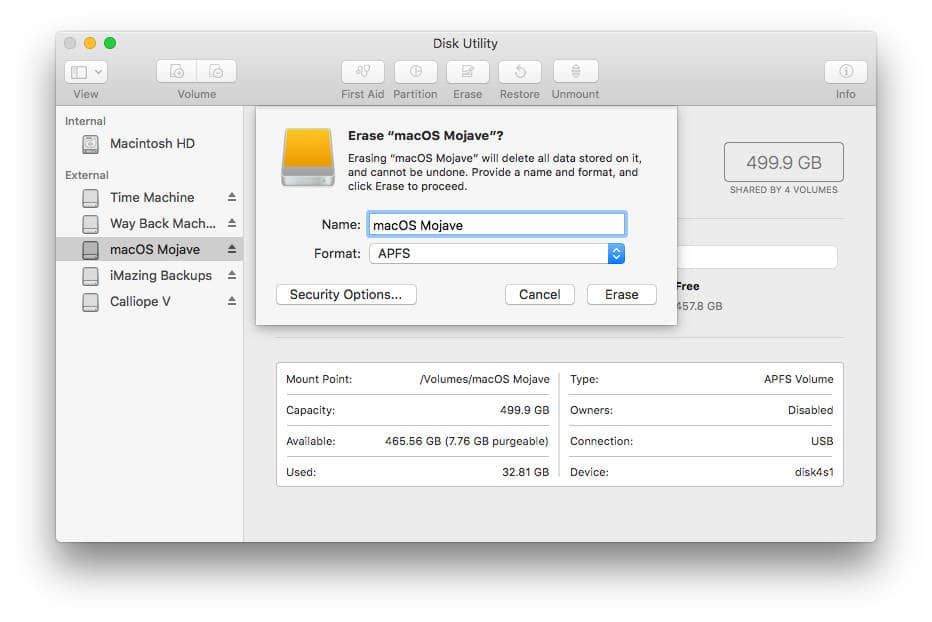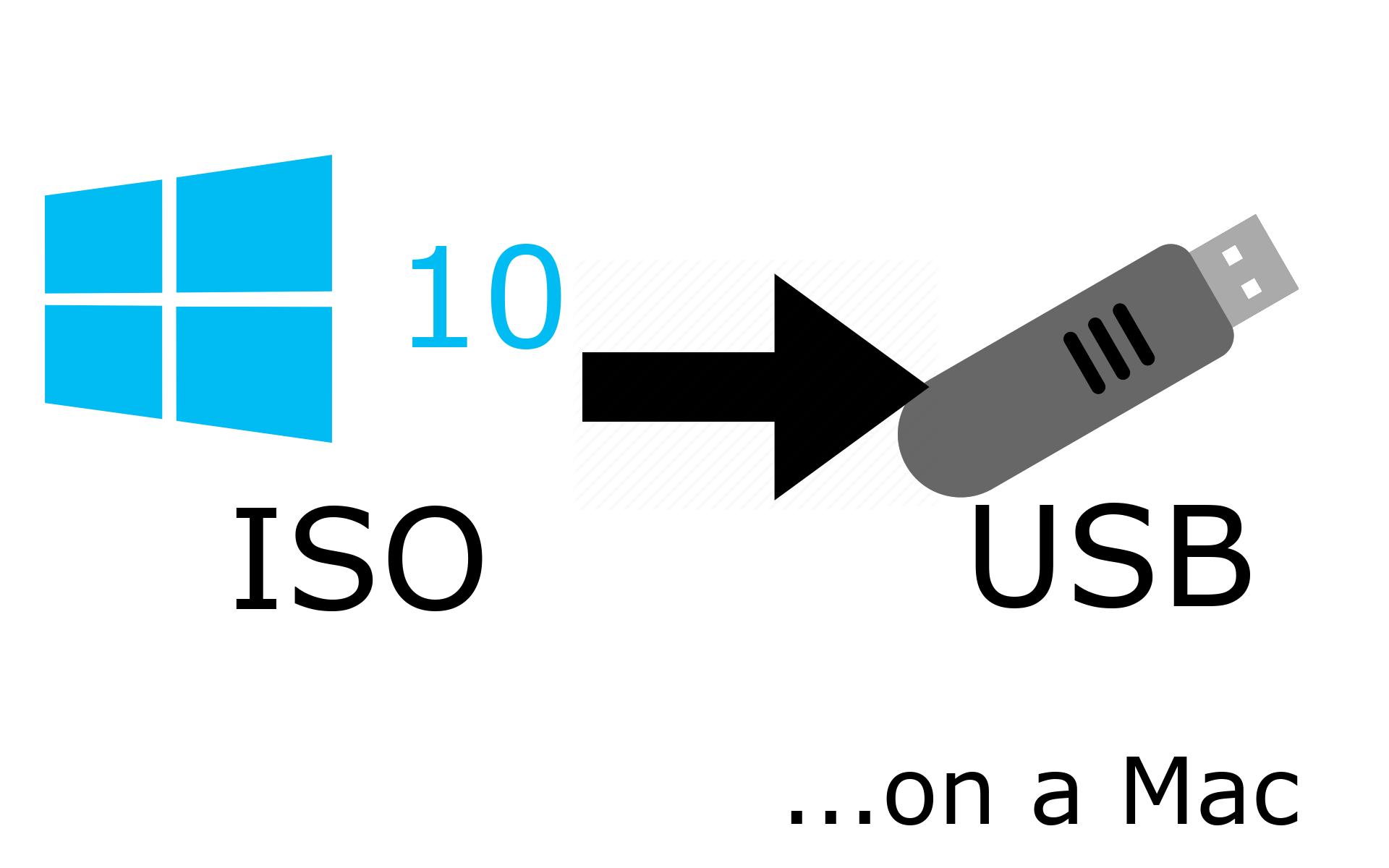Format Thumb Drive Mac Os
Indeed, one of the reasons to use the Terminal to format a USB drive on Mac is to stick to a procedure that is readily available on your stock OS. Note: if you want to use your pen drive to burn the disk image of Windows 10, then you have to use MBR for your boot loader partition. Sep 19, 2011 The overwhelming majority of USB flash drives you buy are going to come in one of two formats: FAT32 or NTFS. The first format, FAT32, is fully compatible with Mac OS X, though with some drawbacks.
- Mac Os Format Usb Drive
- Mac Os X Format Thumb Drive Fat32
- Format Flash Drive Mac Os Extended
- Mac Os Format Thumb Drive Fat32
Yo just got a new external hard drive and want to use it on your Mac. However, the Mac OS does not allow you to write data to the drive. You may wonder how to reformat an external hard drive on Mac. Follow the tutorial below, you'll get everything covered.
Bonus: How to Recover Data from Formatted External Hard Drive on Mac
Reformatting an external hard drive for use with Mac OSX is not as difficult as it might seem. In a few simple steps you are ready to go and can save your back-up files to the external drive, keeping your information safe and giving you peace of mind. Keep in mind that a MAC can generally read other file formats, but for the best performance and to create a bootable disk, formatting exclusively for MAC is required.
Part 1: Which File Format You Should Choose?
Before you begin formatting the drive, there are a few things to do. The most important, you should decide which format to use.
There are a few file formats you can use, but it depends on the purpose you want to use the drive for. Which one is right for your circumstance? We'll describe them here, you'll know your choice after reading the details.
APFS: This is the default file system in Macs with High Sierra. It is efficient and reliable. Shelby bike serial numbers. However, it won't be readable and usable on machines that are not running Mac High Sierra, and Windows or Linux PCs. What's more, it is compatible with SSD and flash storage devices only.
Mac OS Extended (Journaled/HFS+): If you didn't update your Mac OS to High Sierra, the default file system on your Mac shoule be Mac OS Extended. Mac OS Extended (encrypted) would be an ideal option if you probably carry your laptop or external drive here and there. You can encrypt it so that no one can access the contents on your drive.
MS-DOS FAT (aka FAT32): In addition to Mac, it can also be written and read by Linux and Windows. It enables you to regularly share files with your friends who own a PC. Nevertheless, this older file system is limited to no more than 4GB and there might be security issue and disk errors.
ExFAT: It is similar to ExFAT which can be read by both Windows and Mac, but it can store more than 4GB files.
NTFS: As the default file system in Windows, it can only read by Mac OS, writing to it is not available. Luckily, there are third-party tools to help you do so.
Part 2: Format External Hard Drive for Mac with Disk Utility
Formatting an external hard drive would erase everything on it. Hence, you must backup your important files before reformatting the drive if you want to save them. The easiest way is to drag it from one drive to another.
All is set, then you can go ahead to format the drive on your Mac. Disk utility - the MacOS utility application can help you with this. Just follow these steps below:
Step 1. Connect the external drive or the USB drive to the MAC.
Step 2. Start the Disk Utility, located under Applications > Utilities.
Step 3. Find the name of the drive in the left side of the Utilities window and select it. And click Erase button.
Step 4. Follow on-screen prompts to choose Mac OS Extended (Journaled) file system and allow the disk to format.
Bonus: How to Recover Data from Formatted External Hard Drive on Mac
In case you forgot to backup files before formatting the external drive. Here comes the cure - iMyFone AnyRecover - a one-stop solution to recover deleted, lost or formatted files from Mac.
Follow these simple steps using AnyRecover to get your files back!

Get Ready!
First, download and install AnyRecover, following on-screen prompts to accomplish the task.
AnyRecover 20% off Coupon Code: ANY-ART-D20
Don't miss the opportunity to get AnyRecover license at the lowest price on the market. Don't know how to apply it, check the instructions here:
Get Set!
1. After loading AnyRecover, plug your external hard drive into your Mac directly or via USB.
2. Next select the drive under 'External Removable Devices' tab, click 'Start' to begin scanning lost files on the drive.
Go!
1. AnyRecover takes a moment to scan your drive. Once done, it will list out all scanning results by file type.
2. Double click a single file to preview it before recovery.
3. Select the files and press Recover to get them back.
What If?
What if my files were not found? Fear not. We can take this a step further. Enable 'Deep Scan' to try one more time, follow the steps above just as before to locate and recover your files.
It is plain to see that AnyRecover for Mac is a tool worthy of top shelf treatment in your arsenal of items that are used to defend, recover and keep your system up and running. Don't get caught without the file you need for that meeting or stumbling looking for baby photos that were stored on disk and suddenly 'hid' from your view. Allow AnyRecover to find and recover your lost files. AnyRecover is easy to use but provides sophisticated results that mean you know what you're doing!
by Shirly Chen, updated on 2019-07-08 to Mac Data Wipe
USB drives and external hard drives on macOS Catalina are used for storing and backing up important data such as photos, videos, audios, images, notes, messages, music files, PDF files, Word documents, among other files. Sometimes, we delete some of these files because we do not need them, but they remain somewhere and can be retrieved from the same device or using a data recovery software. In some cases, we want to carry out this task in a permanent way, but we do not have any idea about how to do it. Here, we will show you how to permanently format and delete your files and so prevent a possible data recovery.
Three ways to format USB flash drive, external hard drive on macOS Catalina
There are many tools can help you format USB flash drive, portable hard drive, memory card or other storage device on macOS Catalina. Here, we will show you three ways to format USB flash drive, external hard drive, etc on macOS Catalina.
1. Format USB flash drive/external hard drive with Disk Utility on macOS Catalina
Disk Utility is a built-in disk management application on macOS Catalina. You can run it to format the USB flash drive, external hard drive on macOS Catalina. But, the formatted data can be recovered by Mac data recovery software.
2. Format USB flash drive/external hard drive with MacClean360 on macOS Catalina

MacClean360 also offers disk management tool, disk manager. This tool can help you securely and quickly format USB flash drive, external hard drive under macOS Catalina. The formatted data also can be recovered by Mac data recovery software.
3. Format USB flash drive/external hard drive and permanently wipe data on macOS Catalina

If we are planning to sell, donate or dispose our USB flash drive or external hard drive to another person, we should format them to clean up all data, even this is also an option if we want to recover their complete storage. Maybe, we do not know how to format our device properly and permanently to avoid retrieving our private files. here, we will help you choose the best way to format/wipe your device on macOS Catalina; you can use DoYourData Super Eraser for Mac, which is highly recommended by users.
DoYourData Super Eraser for Mac can help you format USB flash drive, External hard drive or other device on macOS Catalina. And it will permanently wipe all data from the USB flash drive or device. Once the USB flash drive/external hard drive is formatted by this software, all data on the USB flash drive/external hard drive will be gone forever, can’t be recovered by any data recovery method. So, before you format your USB flash drive or external hard drive with DoYourData Super Eraser for Mac, you’d better back up your data to a safe location.
The steps to format USB flash drive/external hard drive on macOS Catalina are pretty simple.
Step 1: Download DoYourData Super Eraser for Mac.
Mac Os Format Usb Drive

Download and install this disk formatting tool for macOS Catalina. Then run it from Launchpad. And connect the USB flash drive or external hard drive with your Mac. Ruler on microsoft word mac.
Mac Os X Format Thumb Drive Fat32
Step 2: Format and wipe the USB flash drive/external hard drive on macOS Catalina.
Choose mode “Wipe Hard Drive”, then choose the targeted device and click on “Wipe Now” button. Then the selected USB flash drive or external hard drive will be formatted and all data on the selected device will be permanently erased.
Format Flash Drive Mac Os Extended
The three ways above can help you securely and easily format USB flash drive, external hard drive on macOS Catalina. We strongly recommend DoYourData Super Eraser for Mac. It will help you format and wipe data before you sell, donate, or give away your hard drive, USB flash drive, memory card, digital camera, portable hard drive, etc.
Related Articles
Permanently and securely erase data from hard drive or external storage device under Mac OS with certified data erasure methods.
Mac Os Format Thumb Drive Fat32
Hot Articles